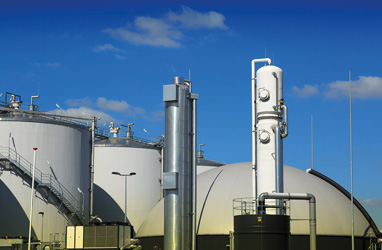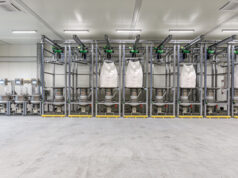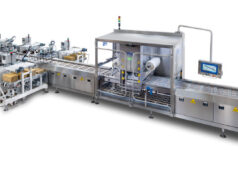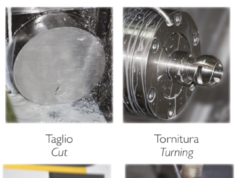 Biomethane. Giving food waste a second life
Biomethane. Giving food waste a second life
From waste to green energy: how food industry by-products become a resource that blends environmental and economic sustainability.
Food industry by-products, mainly from the processing of raw materials with a high degree of biodegradability, are now an incredible opportunity to produce renewable energy and promote circular and sustainable economies.
Sector opportunities
The most significant waste from the agro-food industry comes from meat and fish processing, dairy and confectionery by-products, fruit and vegetable residues, cereals and tubers. Together with wastewater, with the right technologies, these substances can be valorised and transformed into biomethane. For food industries, which can also benefit from the opportunity to use it for out-of-date and returned products, it is one of the technological solutions that best reconciles environmental and economic sustainability.
Producers can feed biomethane directly into the national grid or use it as a green biofuel for product handling fleets, reducing the carbon footprint – the impact of activities on the Global Climate in terms of amount of CO2 that processes generate throughout the life cycle of products – and benefiting from the incentives provided by national legislation.
IES Biogas solutions and technologies for the Food Industry
One of the most prominent companies in the construction and management of biogas and biomethane plants at international level is IES Biogas. The company, which is part of the Snam group, one of the largest operators of energy infrastructures in the world, has set up an entire division, IES Food Industry, dedicated to the Food & Beverage industry: considering the extreme variability of the production processes specific to this sector, it is thus qualified to offer the best technological solutions for optimising the production of biogas from any organic matrix with suitable potential, through an in-depth assessment of the industry and the territorial context where it operates.
Among the technological solutions proposed, the implementation of robust, reliable and flexible CSTR (Continuous Stirred Tank Reactor) is suitable for solid and semi-solid matrices. For liquid matrices with a high organic load, on the other hand, the use of “fast” anaerobic systems such as UASB/EGSB fluidised bed reactors, characterised by high efficiencies in terms of biogas production, reduced organic loads, low hydraulic residence times and small volumes, can maximise biogas production with a consequent reduction in organic load.
For processing high nitrogen digestates and streams, IES Biogas offers a deammonification process, an efficient ammonia removal system using autotrophic microorganisms, which reduces volumes and energy consumption.
Completing the portfolio of biological systems are the aerobic technologies for the subsequent treatment and refinement of wastewater with SBR (discontinuous sequential process) and MBR (membrane reactors) technologies, which guarantee a further reduction in organic load. Among the final systems, ultra-filtration and reverse osmosis processes are recommended for water recovery, with a view to minimising water consumption with a dedicated approach to ZLD (Zero Liquid Discharge).
As for biogas, IES Food Industry also uses the best plant solutions for treatment and subsequent upgrading, with the focus on maximising yields and feeding the maximum volume of biomethane available into the grid.
In the food industry context, regardless of biomethane production, all the solutions proposed always lead to high energy efficiency targets and minimise operating costs, through the reduction of sludge produced and chemicals used.
“Every plant we build – explains Marco Mazzero, CEO of IES Biogas – fulfils the needs of the market in terms of construction and safety, management and automation. The architectural and executive design, the piping, the electrical and hydraulic systems, and the software are entirely developed in-house, guaranteeing the customer a truly customised quality product”.
References
In Amiens, France, IES Biogas is starting the modernisation of the Idex Environnement Picardie plant: the new line will treat 20,000 tonnes/year of waste from retail and catering to obtain 2.2 million m3 of biogas and an annual electricity production of 6 million kWh. In the overall upgrading project (€20 million), the company will focus on waste pre-treatment with depackaging, pasteurisation with regenerative system, anaerobic digestion and digestate separation.
Back in Italy, IES Biogas has created several outstanding examples of circular economy: in Sicily, the Assoro plant, which produces 4,400 Sm3 of biomethane from agro-industrial waste, including citrus processing waste and olive pomace, is able to fuel almost 3,000 cars and save 3,400 tonnes of oil equivalent, corresponding to 8,580 tonnes of CO2 less in the atmosphere.
With 660 tonnes of dairy industry wastes and by-products per day, the AF Bioenergie plant in the province of Vicenza, is able to produce 9.4 million Sm3 of advanced biomethane per year for feeding into the national gas network. The plant can power 6,380 vehicles a year, saving around 7,300 tonnes of oil equivalent and 18,300 tonnes of CO2 in the atmosphere.
The treatment of meat waste also provides interesting opportunities: The IMC Guzzo plant has been running for a number of years and produces 2.46 million kWh of electricity per year from biogas using slaughterhouse waste (6.4 t/day).
For more information:
www.iesbiogas.it – info@iesbiogas.it
Biometano. La segunda vida de los desechos alimentarios
De desechos a energía verde: así es como los subproductos de la industria alimentaria se convierten en un recurso que permite compaginar la sostenibilidad medioambiental con la económica.
Los subproductos de la industria alimentaria, provenientes principalmente del procesamiento de materias primas con un alto grado de biodegradabilidad, son hoy una oportunidad increíble para producir energías renovables y promover economías circulares y sostenibles.
Los residuos más importantes de la industria agroalimentaria derivan del procesamiento de carne y pescado, subproductos lácteos/caseosos y confiteros, residuos de frutas y hortalizas, cereales y tubérculos. Junto con las aguas residuales, gracias a tecnologías adecuadas, se pueden valorizar y transformar en biometano. Para la industria alimentaria, que también puede aprovechar esta oportunidad para productos caducados y devoluciones, es una de las soluciones tecnológicas que mejor logra conciliar la sostenibilidad medioambiental con la económica. Los productores pueden introducir biometano en la red de gas o utilizarlo como biocombustible para las flotas que manipulan mercancías, reduciendo así lo que reduce la huella de carbono.
IES Biogás para la industria alimentaria
Una de las empresas más activas en la construcción de plantas de biogás/biometano a nivel internacional es IES Biogas, que forma parte del grupo Snam, uno de los mayores operadores de infraestructuras energéticas del mundo, y que ha dedicado al sector Food & Beverage (Alimentos & Bebidas) la división de Food Industry (Industria Alimentaria): considerando la extrema variabilidad de los procesos productivos del sector, ofrece las mejores soluciones tecnológicas para optimizar la producción de biogás a partir de cualquier matriz orgánica con potencial adecuado, mediante una evaluación exhaustiva de la industria y el territorio.
Entre las soluciones tecnológicas propuestas, la implementación de reactores de mezcla completa (CSTR, Continuous Stirred Tank Reactors), robustos, fiables y flexibles, es adecuada para matrices sólidas y semisólidas. Para matrices líquidas con alta carga orgánica, por otro lado, el uso de sistemas anaeróbicos “rápidos” como los reactores de lecho fluidizado UASB/EGSB, caracterizados por altas eficiencias en términos de producción de biogás, reducción de cargas orgánicas, bajos tiempos de residencia hidráulica y volúmenes reducidos, permite maximizar la producción de biogás, lo que conlleva una consiguiente reducción de la carga orgánica. Para el tratamiento de digestatos y flujos con alto contenido en nitrógeno, IES propone un proceso de desamonificación, un sistema eficiente de remoción de amonio a través de microorganismos autótrofos, que permite reducir los volúmenes y el consumo de energía.
El portafolio de sistemas biológicos se completa con las tecnologías aeróbicas para el posterior tratamiento y refinamiento de aguas residuales mediante las tecnologías SBR (proceso secuencial discontinuo) y MBR (reactores de membrana), que garantizan una reducción aún mayor de la carga orgánica. Para la recuperación de agua, los procesos de ultrafiltración y ósmosis inversa están orientados a minimizar el consumo de agua con un enfoque dedicado a la Descarga de Líquidos Cero (ZLD, Zero Liquid Discharge).
En el contexto de la industria alimentaria, todas las soluciones propuestas permiten alcanzar objetivos de alta eficiencia energética y minimizar los costes de explotación, reduciendo los lodos producidos y los productos químicos utilizados.
“Cada planta que se construye – explica Marco Mazzero, DG IES Biogas – responde a las necesidades del mercado en términos de construcción y seguridad, gestión y automatización. El diseño arquitectónico y ejecutivo, las tuberías, el sistema eléctrico e hidráulico, el software son íntegramente desarrollados internamente, garantizando al cliente un producto de calidad hecho realmente a medida”.
Las plantas
En Francia, IES Biogas está renovando la planta de Idex Environnement Picardie: la nueva línea procesará 20.000 t/año de artículos caducados de la GDO y de la restauración para obtener 2,2 millones de m3 de biogás y una producción anual de electricidad de 6 millones de kWh. La empresa se ocupará del pretratamiento de residuos incluyendo el desembalaje, la pasteurización con sistema regenerativo, la digestión anaeróbica y la separación del digestato.
En Italia, IES Biogas ha creado varios ejemplos virtuosos de economía circular: en Sicilia, la planta de Assoro, que produce 4.400 Sm3 de biometano generado a partir de residuos agroindustriales, incluidos los residuos del procesamiento de cítricos y orujos de aceituna, puede alimentar 3000 coches, con un ahorro de 3.400 toneladas de petróleo equivalente, lo que equivale a 8.580 toneladas de CO2 menos de emisión en la atmósfera. Con 660 toneladas de aguas residuales y subproductos de la industria láctea y quesera por día, la planta AF Bioenergie produce cada año 9,4 millones de Sm3 de biometano para la red nacional de gas. Puede alimentar 6.380 vehículos al año, con un ahorro de 7.300 toneladas de equivalente de petróleo y 18.300 toneladas de CO2 de emisión en la atmósfera. La empresa IMC Guzzo consigue extraer de los residuos del matadero (6,4 t/d) electricidad a partir del biogás correspondiente a 2,46 millones de kWh al año.
www.iesbiogas.it info@iesbiogas.it









